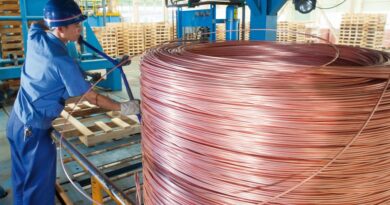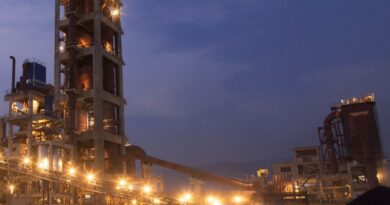Stainless steel cyclone used across various industries
Multotec’s new stainless steel cyclone, made entirely of stainless steel, is ideal for industries where contamination of processed slurry or liquid is unacceptable.
Ernst Bekker, Product Specialist – Cyclones at Multotec, says that unlike traditional cyclones with rubber linings, which can degrade over time, the stainless steel cyclone ensures purity and is suitable for high-temperature environments.
“The cyclone is designed to operate at temperatures up to 100˚C and is versatile enough to be used across various industries, including food and chemicals. It is especially beneficial in environments where high temperature and corrosion resistance are essential,” says Bekker.
Richard Haydon, Product Specialist – Cyclones at Multotec, notes that the stainless steel cyclone’s ability to support various difficult applications demonstrates the flexibility and technical ability of Multotec’s cyclone team.
Integrated Solution
By combining the H450 Conturbex Centrifuge, Shaking Fluidised Bed Dryer, MA Oryx Pump, and stainless steel cyclone into an integrated solution, Multotec offers clients the ability to produce high-quality products that meet customer demands in terms of dryness, purity, and flow characteristics. Multotec draws on its extensive experience, supported by its OEM sister companies Siebtechnik Tema and Tema Process, to deliver tailored solutions for local and international markets.
This integrated approach reinforces Multotec’s position as a versatile and innovative leader in the industry, committed to advancing local manufacturing and delivering cutting-edge solutions.
Multotec’s technology and expertise has optimised recoveries and reduced costs on mines around the world for over 50 years, making the company a global leader in metallurgy and process engineering. Its network of companies and manufacturing facilities now reaches into Africa, Asia, Australia and the Americas.
At its facilities, Multotec tests designs relating to magnetic separation, hydrocyclones, filtration, wear linings, screening and gravity concentration. The results allow engineers to optimise plant solutions according to their exact applications and output requirements. Its laboratories can test and measure sample filtration, sample drying, particle size distribution analysis, float and sink analysis and sample splitting applications.
Its manufacturing, production and assembly facilities across the globe embrace the latest design and engineering tools, bringing the power of computational fluid dynamics, computer-aided drawing and trajectory modelling to bear on its innovations.




